In this tutorial you will learn how to create a template file for size variables, and how to import them to HyperStudy. The input variables are the thickness of each of the three components, defined in the input deck via the PSHELL card. The thickness should be between 0.05 and 0.15; the initial thickness is 0.1 (shown below).
The sample base input template used in this tutorial can be found in <hst.zip>/HS-1020/. Copy the tutorial files from this directory to your working directory.
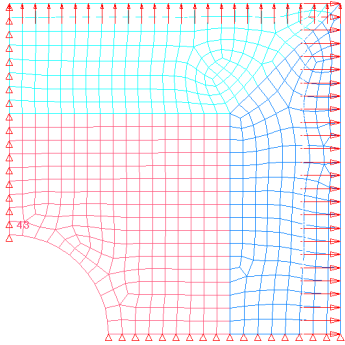
Figure 1: Double Symmetric Plate Model
| 2. | To start a new study, click File > New from the menu bar, or click  on the toolbar. on the toolbar. |
| 3. | In the HyperStudy – Add dialog, enter a study name, select a location for the study, and click OK. |
| 4. | Go to the Define Models step. |
| 6. | In the HyperStudy - Add dialog, select Parameterized File and click OK. |
| 7. | In the Resource column, click  . . |
| 8. | In the Open File dialog, open the plate.fem file. A HyperStudy dialog opens, informing you that there are no parameters found in the file. |
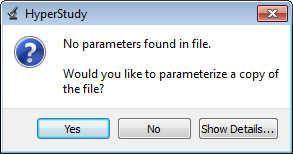
| 9. | Click Yes to parameterize the file. The plate.fem file opens in the Editor. |
| 10. | In the Find area, enter PSHELL. |
| 11. | Click  three times. Three PSHELL cards containing the shell thickness of each component in the fourth field are highlighted. three times. Three PSHELL cards containing the shell thickness of each component in the fourth field are highlighted. |
Each field is eight characters long. The numbers need to be replaced with formatted Templex statements to mark an input variable.
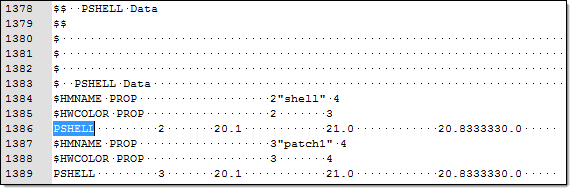
| 12. | Starting at 0.1, highlight the first eight fields for thickness. |
| Tip: | Quickly highlight 8-character fields by pressing CTRL to activate the Selector (set to 8 characters) and then clicking the value. |

| 13. | Right-click on the highlighted fields and select Create Parameter from the context menu. |
| 14. | In the Parameter - varname_1 dialog, Label field, enter t1. |
| 15. | In the Format field, enter %8.5f. |
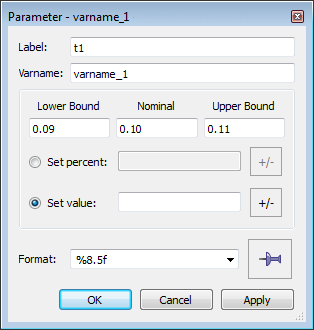
| 17. | Click OK to close the Editor. |
| 18. | In the Save Template dialog, save the template file as plate.tpl. HyperStudy automatically populates the Resource column with the plate.tpl file, and the Solver input file column with the solver input file name plate.fem. |
| 19. | In the Solver execution script column, select OptiStruct (os). |

| 20. | Click Import Variables. One input variables is imported from the plate.tpl resource file. |
| 21. | Go to the Define Input Variables step. |
| 22. | Review the input variable's lower and upper bound ranges. |
| 23. | Go to the Specification step. |
|
| 1. | In the work area, set the Mode to Nominal Run. |
| 3. | Go to the Evaluate step. |
| 5. | Go to the Define Output Responses step. |
|
In this step you will create two output responses: Mass and Displacement.
| 1. | Create the Mass output response. |
| a. | From the Directory, drag-and-drop the plate.out file, located in approaches/nom_1/run_00001/m_1, into the work area. |
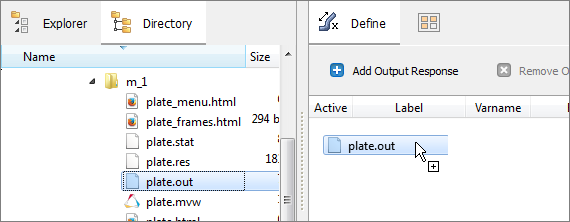
| b. | In the File Assistant dialog, set the Reading technology to Altair® HyperWorks® and click Next. |
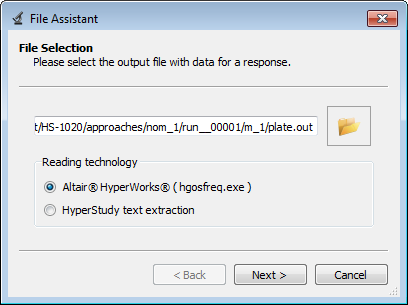
| c. | Select Single item in a time series, then click Next. |
| d. | Define the following options, then click Next. |
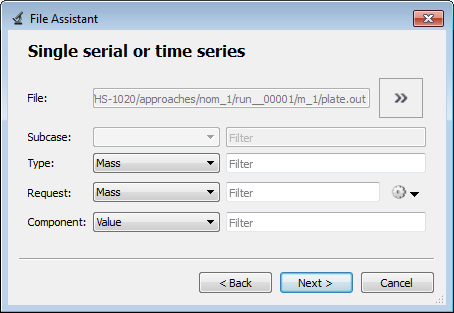
| e. | Label the output response Mass. |
| f. | Set Expression to First Element. |
| Note: | Because there is only a single value in this vector, [0] is inserted after v_1, thereby choosing the first (and only) entry in the vector. |
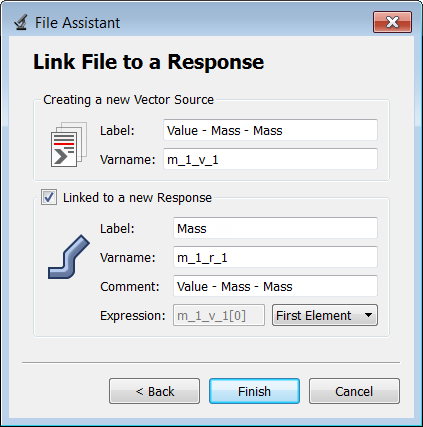
| g. | Click Finish. The Mass output response is displayed in the work area. |
| 2. | Create the Displacement output response. |
| a. | From the Directory, drag-and-drop the plate.h3d file, located in approaches/nom_1/run_00001/m_1, into the work area. |
| b. | In the File Assistant dialog, set the Reading technology to Altair® HyperWorks® and click Next. |
| c. | Select Single item in a time series, then click Next. |
| d. | Define the following options, and then click Next. |
| • | Set Subcase to Subcase 1 (Load). |
| • | Set Type to Displacement (Grids). |
| e. | Label the output response Displacement. |
| f. | Set Expression to First Element. |
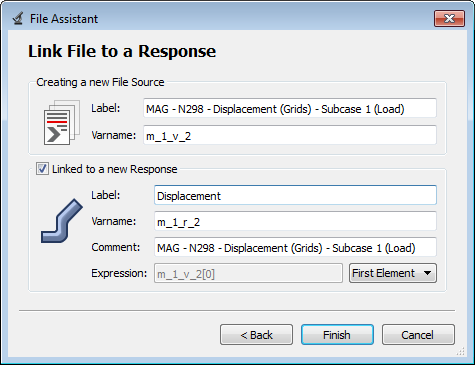
| g. | Click Finish. The Displacement output response is added to the work area. |
| 3. | Click Evaluate to extract the output response values. |

| 4. | Proceed to the desired study type (DOE, Optimization, of Stochastic study). |
|
See Also:
HyperStudy Tutorials



















